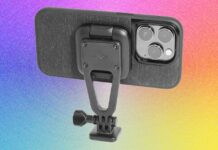Black Friday has evolved. No longer just a single day of door-busting chaos, it’s now a month-long event. The pressure to find the best deals can be overwhelming. But with the right strategy, you can navigate the sales and save significant money. This guide will equip you with the knowledge to make informed decisions, avoid impulse buys, and secure the best discounts.
When Does Black Friday Start?
In 2025, Black Friday falls on November 28th, followed by Cyber Monday on December 1st. However, sales often begin earlier, sometimes as early as Thanksgiving or even the Wednesday before. To maximize your chances of snagging the best deals, start checking online retailers around midnight Eastern time on November 26th. Many retailers launch early sales to gain an edge.
The Rise of Online Black Friday Deals
The majority of Black Friday deals are now available online. This convenience eliminates the need to brave crowded stores, but it also means competition is fierce. The best deals sell out quickly, so be prepared to act fast. Make a list of what you want to buy ahead of time to avoid impulse purchases. Remember, sales happen again; don’t overspend just because something is discounted.
Which Retailers Will Offer Black Friday Deals?
Nearly every major retailer participates in Black Friday, including Amazon, Target, Walmart, and Best Buy. Expect discounts across all categories, from electronics and clothing to home goods and fitness equipment. Even smaller businesses and specialty stores will offer promotions. Check retailer websites directly for their Black Friday landing pages, usually highlighted prominently on the homepage.
Is Black Friday Worth It?
Generally, yes. Black Friday offers some of the deepest discounts of the year, setting the benchmark for pricing in the months that follow. However, some “deals” are repetitive, like low prices on smart speakers. If a product goes on sale every few months, consider whether you truly need it. The key is to research prices and avoid buying things just because they’re cheap.
How Much Can You Save?
Savings vary depending on what you buy. TVs, in particular, often see significant discounts before the Super Bowl. Clothing, toys, and home goods also offer savings, but the amount may be less dramatic. Regardless, Black Friday provides opportunities to save across almost every product category.
How to Identify a Good Deal
Always compare prices. Use tools like Camelcamelcamel, Keepa, and Honey to track price history on Amazon and other retailers. These extensions can slow down your browser, so you can also check manually. The goal is to ensure the “deal” is genuinely discounted and not just a temporary price hike followed by a “sale.”
Understanding “Doorbuster” Deals
Originally, doorbusters were in-store exclusives requiring early arrival. Now, these limited-quantity deals are also available online. If you see a doorbuster, be prepared to refresh the page precisely when it starts to avoid missing out.
Avoiding Sell-Outs
The best way to avoid missing out on a deal is to know the start time in advance. Navigate to the product page a few minutes before and refresh. If you’re serious, create accounts and save payment information beforehand to speed up checkout. Clearing your browser cache can also help.
Cyber Monday and Beyond
Cyber Monday (December 1st) focuses on tech deals, but many Black Friday discounts remain active. Small Business Saturday supports local retailers. Green Monday (mid-December) offers last-minute deals, particularly on eBay. Retailers will continue offering sales through the holidays, including Free Shipping Day on December 14th.
In conclusion: Black Friday is a prime opportunity to save money, but it requires preparation. Research prices, make a list, and act quickly. By following these guidelines, you can navigate the chaos and secure the best deals without overspending





















































